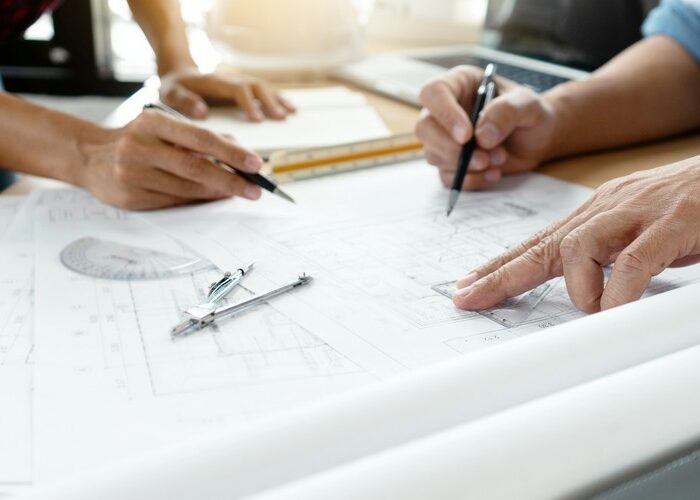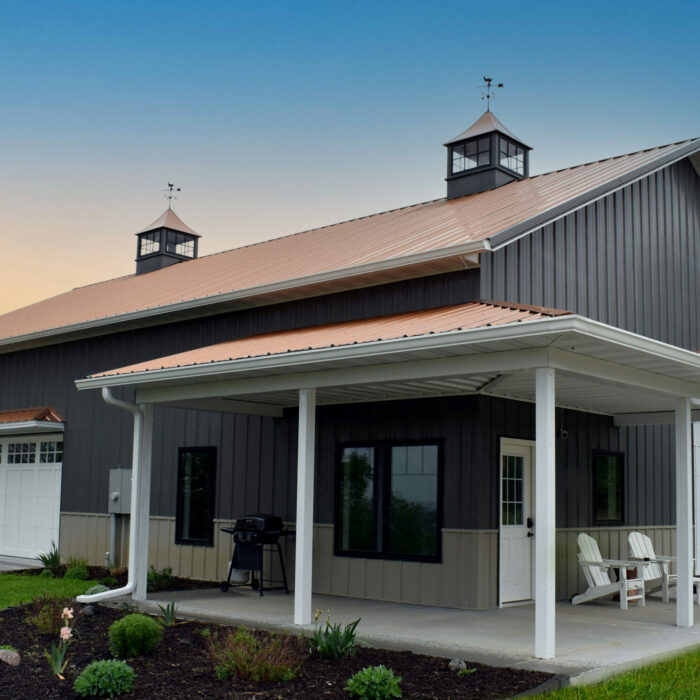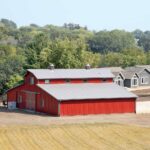From materials to financing to everything in between, the planning and construction of a new pole barn building is a big project, and there are lots of details to be thought through. As a trusted, expert pole barn builder, Greiner Buildings has plenty of experience in this arena. To share this insight with you, we have put together the answers to eight of the most commonly asked questions from the pole barn research and construction process. Our hope is that this better prepares you for your next pole building construction project.
# 1 How does the cost of pole barn materials factor into the overall cost of the pole barn building?
The two base cost components of a pole barn building are labor and materials, with materials being the most volatile of the two. For this reason, the total cost of a pole barn building is most directly dependent on the cost of the pole barn materials. When the supply and demand change and there is a steep incline in the cost of raw pole building materials – such as concrete, windows, doors, steel, and lumber – you will also see a steep incline in the total price of a pole barn building. The inverse is true as well. When the raw construction materials market is in a period of fluctuation (hello, 2021), it is to your advantage to be quick and decisive during the quoting process.
# 2 What is the best way to insulate a pole barn?
While pole building insulation can feel like a “nice to have,” insulating your pole barn has many advantages, including climate control and moisture prevention. When it comes to how to insulate a pole barn, there are a couple different options available to you. Greiner Buildings most often recommends and installs either TextraFine fiberglass insulation or Spray Foam insulation. Both options work great and have their own unique advantages. You can learn more about these pole building insulation options at this link.
# 3 What pole barn siding options are available?
Steel is the most popular pole barn siding option by far. Steel siding is also the best option for withstanding the elements that pole barn buildings so often face. Other materials like vinyl and wood are less weather resistant, require more maintenance, and can require your builder to use a different framing and spacing method leading to potential unplanned costs and time. For this reason, Greiner Buildings exclusively offers metal siding for pole barns.
It also important to recognize that not all pole barn metal siding is created equally. Here at Greiner Buildings, we recommend 26-gauge panels versus 29-gauge panels for your building. The lower the number, the thicker the metal. Generally, 26-gauge metal siding panels are around 25% thicker than the 29-gauge option. At Greiner, we use 26-gauge steel panels because they are thicker, higher quality and contribute significantly to overall structural integrity. Metal matters!
# 4 What is the proper way to site prep for pole barn installation?
Site preparation for your pole barn is critical to a successful, efficient build. One of the most important aspects of site preparation is making sure the ground is level. This is not something that can be confirmed by sight alone and requires the use of lasers and other leveling tools to feel confident in how you have leveled the ground for your pole barn. Other things to consider include how you are excavating and grading the land to allow for proper drainage, as well as having at least a 10-foot level working apron for crews and equipment to maneuver around the build site.
Of course, if you do not feel confident in your ability to properly level the ground for your pole barn, leave it to the professionals. This is a service that Greiner Buildings and most other professional pole barn builders provide. It can often be better to have them handle it from the start than to have to do additional excavation work the first day they show up for construction.
# 5 What are the standard pole barn sizes?
There really is no standard size when it comes to pole barns. Each pole barn build is unique and customized to the size that works best for its intended use and location. Pole barn sizes vary greatly depending on the type of building – agricultural buildings, hobby garages, and commercial storefronts will all vary in their footprints. The most common sizes we get asked for are a 30′ x 40′ pole barn, 40′ x 60′ pole barn, or a 40′ x 40′ pole barn.
It is important to keep it mind that it is typically most cost-effective to build in 8-, 9- or 10-feet increments because of the standard spacing options for pole barn posts. For example, we would recommend building a 40’ x 64’ pole barn building versus a 40’ x 60’ version. You are already paying for the same amount of trusses and posts, and there would be only an incremental cost increase for additional framing and steel.
# 6 How do I finance a pole barn building?
The first thing to consider when seeking financing for your pole barn building is its intended use. Pole barn loan options will vary depending on whether your building is for residential, agricultural, or commercial purposes. The landscape for pole barn home financing used to be nearly non-existent; however, as the demand for these types of homes has increased there have been new financing options made available. Construction loans for pole barn houses are still typically not the same financing as conventional style homes, but there are now good alternative options available.
When searching for lenders, we recommend asking specifically about their experience in financing pole barn loans and mortgages. Find a company who has expertise in this arena and can guide you through the process. Greiner Buildings can also recommend experienced lenders for you to contact.
# 7 How much does it cost to build a pole barn?
The total cost of a pole barn building can vary depending on the intended use, selected finishes, and as mentioned above, the current cost of materials. Pole barn buildings are a great economical and long-lasting option for a traditional agricultural building. When considering a residential pole barn house, the cost really does not look much different from a traditional home build. If you are curious about pole barn house costs in particular, we broke it all down in our last blog post.
# 8 How do I pick the right post frame builder?
Picking the right pole barn builder can make or break your important project. Make sure that the builder you select is not only knowledgeable but also someone you feel comfortable talking with, sharing information, and taking recommendations. The quoting process is a great baseline for how the rest of the relationship is likely to go. Be ready to invest time with the salesperson, designer, and construction manager. You are making a significant investment in your new pole barn building, and while your builder will handle a lot of the work, it is important that you are educated on the process and keep an open, ongoing dialogue. Finally, in this line of work it is always important to understand the company’s reputation and work history. You can get a good feel for prior customer satisfaction through the frequency of repeat business, awards, and testimonials.
Greiner Buildings has over 35 years of experience constructing pole buildings in Iowa and Illinois. We provide complete building services and handle everything from design to material delivery and construction. No matter how big or small your project is, our expert team has the training and expertise to produce a high-quality building that will last you for years to come.
Contact us today to learn about how our team can help you build the custom pole barn of your dreams!




